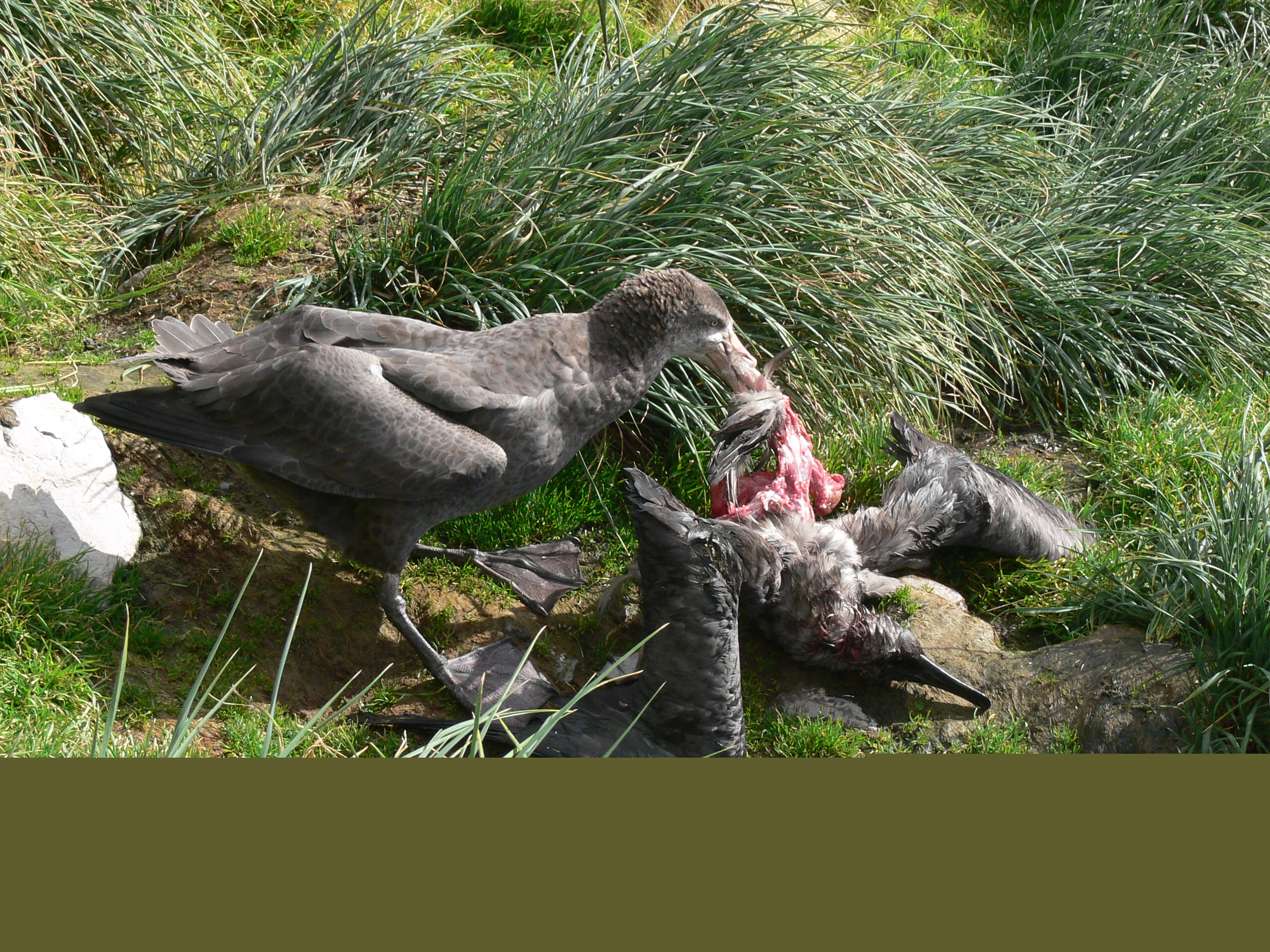
A Northern Giant Petrel feeds on a Sooty Albatross chick on Marion Island, photograph by Marienne de Villiers
Ryan Reisinger (Marine Apex Predator Research Unit, Nelson Mandela University, Port Elizabeth, South Africa) and colleagues have published open access in the journal Royal Society Open Science on differences in the diets and at-sea distributions of sympatrically breeding Northern Macronectes halli and Southern M. giganteus at Marion Island.
The paper’s abstract follows:
“To mediate competition, similar sympatric species are assumed to use different resources, or the same but geographically separated resources. The two giant petrels (Macronectes spp.) are intriguing in that they are morphologically similar seabirds with overlapping diets and distributions. To better understand the mechanisms allowing their coexistence, we investigated intra- and interspecific niche segregation at Marion Island (Southern Indian Ocean), one of the few localities where they breed in sympatry. We used GPS tracks from 94 individuals and remote-sensed environmental data to quantify habitat use, combined with blood carbon and nitrogen stable isotope ratios from 90 individuals to characterize their foraging habitat and trophic ecology. Females of both species made distant at-sea foraging trips and fed at a similar trophic level. However, they used distinct pelagic habitats. By contrast, males of both species mainly foraged on or near land, resulting in significant sexual segregation, but high interspecific habitat and diet overlap. However, some males showed flexible behavioural strategies, also making distant, pelagic foraging trips. Using contemporaneous tracking, environmental and stable isotope data we provide a clear example of how sympatric sibling species can be segregated along different foraging behaviour dimensions.”
Reference:
Reisinger, R.R., Carpenter-Kling, T., Connan, M., Cherel, Y. & Pistorius, P.A. 2020 Foraging behaviour and habitat-use drives niche segregation in sibling seabird species. Royal Society Open Science doi.org/10.1098/rsos.200649.
John Cooper, ACAP Information Officer, 16 September 2020

 Español
Español  English
English  Français
Français